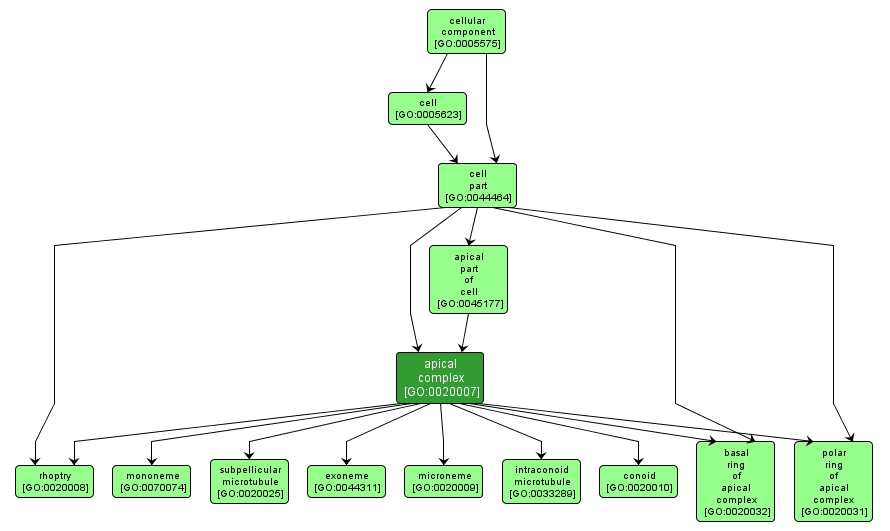GO TERM SUMMARY
|
| Name: |
apical complex |
| Acc: |
GO:0020007 |
| Aspect: |
Cellular Component |
| Desc: |
Protruding complex at the anterior end of some life cycle stages of all apicomplexan parasites, involved in both the attachment and penetration of the host cell by the parasite. |
|

|
INTERACTIVE GO GRAPH
|














